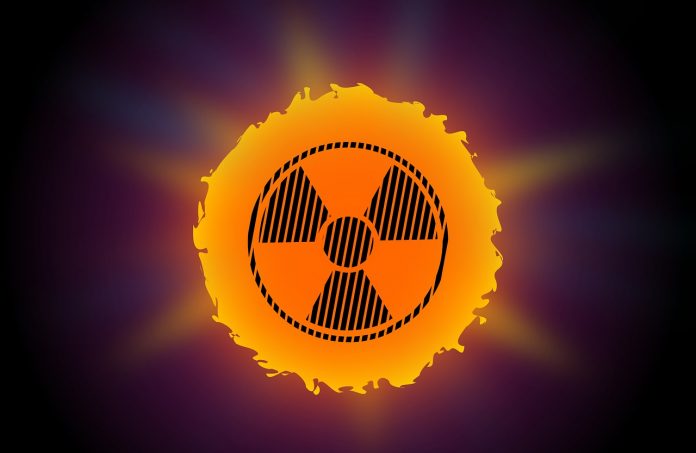Physics and Folly applies real world science to familiar and fantastic situations. Discover the answers no one has heard, to the questions no one ever asked.
I’m sure that between the atomic tests North Korea has been performing, the Hawaiian ballistic missile scare, and the current political situation in our nearest southern neighbour, you’ve probably been wondering the same thing I have: How can we bring an advanced nuclear weapons program to UFV?
This will be a guide for the ages, or at least for the end of them, as I lay out the three simple steps to become a player in the nuclear weapons space.
Step one: Acquire the materials. Of the two nuclear weapons ever used in warfare, one used uranium, and the other used plutonium. However, if you decide to head out into the wilderness looking for either, you might not turn up any results. Plutonium is a bit trickier to make a nuclear device out of, and it occurs naturally in such small amounts that we have to make it in a lab — out of uranium. Luckily, uranium is several hundred times more plentiful than gold throughout the Earth’s crust, but because it’s dispersed fairly uniformly, you’re going to have a difficult time finding any just laying around — except in Saskatchewan.
Saskatchewan has the world’s highest quality uranium deposits, with concentrations of uranium ore reaching up to 18 per cent. But for those of you suddenly worried about your second cousins out east contracting radiation poisoning, uranium by itself is actually fairly harmless. Well, harmless via radiation poisoning. It’s still a toxic metal, so don’t tell your Saskatchewan friends it’s safe to eat ore samples if they’re visiting the uranium mines up north. But really, don’t tell anyone to eat ore samples — or rocks in general.
Regardless, say we manage to head up to the middle of nowhere, and mine ourselves some tasty, tasty uranium, we’ll find ourselves ready for step two.
Step two: Spend some time with it. Using commonly known refining techniques, it’s relatively easy to purify ore into a metal. Unfortunately (or fortunately, if you value the survival of the human species) this purified uranium is still not able to make a bomb go boom. See, a little over 99 per cent of the uranium that we find is a pretty stable isotope: U-238. It’s only the U-235 isotope that is fissile — capable of undergoing the rapid sustained nuclear reaction that we need to strike fear into the hearts of our enemies, who we’ll refer to kindly as Space Nazis.
Regardless, both of our uranium isotopes act similarly chemically, making it hard to isolate the U-235 that we need. So, what we’ll do is abuse the fact that our U-235 atoms have three less neutrons, making them weigh about one per cent less than their uninteresting U-238 counterparts: we’ll turn the uranium into a gas.
That in itself is a tricky process, which we’ll leave to the chemists always stinking up the A building. Once we have our gaseous uranium, we just need to spin it through a series of hundreds or thousands of towering centrifuges, each centrifuge working to separate out a small percentage of the lighter U-235 from the slightly denser U-238. If we’re doing this on the UFV campus, I say we use the C building for this. C for centrifuges, it just makes sense. We then turn to the chemists again to turn our newly enriched uranium into a solid metal, and finally we’re ready to teach those Space Nazis a lesson, right? Well, not quite.
Step three: Making the bomb. To actually make a device capable of horrendous hellfire, we could take a couple of approaches, but since this is our first time, we’ll take the simplest one.
We’re going to need a really big gun, like a cannon. Not to shoot very far; all we need is about a cannonball’s worth of barely subcritical (slightly too small of an amount to be incredibly dangerous on its own) enriched uranium to collide with another barely subcritical mass of enriched uranium. You see where this is going.
The two colliding chunks of uranium quickly form a large critical mass, causing an out of control nuclear fission reaction, releasing the energy equivalent of thousands of tons of TNT. Of course it’s still a bit more complicated than that — the uranium bullet is actually going to be a hollow cylinder, and the target uranium is shaped just right so that the hollow cylinder will slip neatly over it, and we’ve also got to deal with pre-detonation issues, and a bunch of other problems that are complicated and interesting but are really hard to explain without the use of complicated diagrams and technical jargon that is far beyond my pay grade. And then we still need to ask Elon Musk for a rocket, to build us a launchpad, and to rewrite the nuclear prohibition laws. But if all those things happen we’ll finally (finally!) be able to kick some Space Nazi butt.


